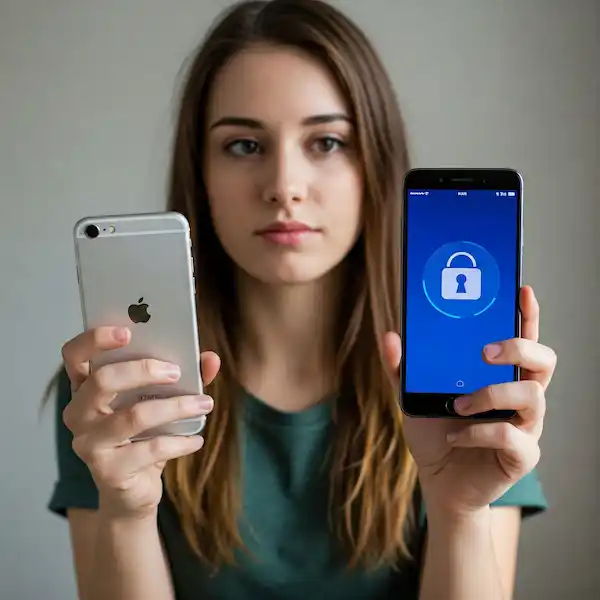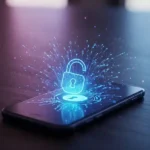Locked Out? A Comprehensive Guide to Unlocking Your Phone
That moment of panic when you can’t access your own phone is frustrating. Whether you’ve forgotten your passcode, your fingerprint sensor isn’t cooperating, or you’ve encountered some other lock screen issue, this article is here to help. We’ll walk you through various methods to unlock phone – iPhone and Android devices, including what to do if you’ve completely forgotten your password.
Understanding Your Lock Screen Security
Before diving into solutions, it’s helpful to understand the common types of lock screen security:
- Passcode/PIN: A sequence of numbers or a combination of numbers, letters, and symbols.
- Pattern: A sequence of dots you swipe to connect.
- Fingerprint: Uses your unique fingerprint for authentication.
- Face ID/Facial Recognition: Scans your face to unlock your device.
The methods for unlocking your phone will vary depending on the type of security you’ve enabled.
Part 1: Standard Unlock Phone Methods
These are the methods you’ll use most of the time to unlock your phone.
For iPhone:
- Face ID (if enabled):
- Lift your iPhone and look directly at the screen.
- Ensure nothing is obstructing your face (e.g., mask, sunglasses).
- Your iPhone should recognize your face and unlock automatically.
- Swipe up from the bottom of the screen to access your home screen.
- Touch ID (if enabled):
- Place your registered finger on the Home button (for older iPhones) or the Power button (for iPhone SE 3rd generation and iPad Air 4th/5th generation, iPad mini 6th generation).
- Ensure your finger is clean and dry.
- Your iPhone should recognize your fingerprint and unlock automatically.
- Press the Home button or Power button (depending on your model) to access your home screen.
- Passcode:
- When prompted, enter your 4 or 6-digit passcode (or alphanumeric password if you set one).
- Tap “Done” or wait for the phone to unlock automatically after entering the correct passcode.
For Android:
The exact steps might vary slightly depending on your Android manufacturer (Samsung, Google Pixel, OnePlus, etc.).
- Fingerprint Sensor (if enabled):
- Place your registered finger on the fingerprint sensor. This sensor can be located on the back, front (often integrated into the screen or Home button), or side (integrated into the power button) of your phone.
- Ensure your finger is clean and dry.
- Your phone should recognize your fingerprint and unlock automatically.
- Face Unlock (if enabled):
- Lift your phone and look directly at the screen.
- Ensure nothing is obstructing your face.
- Your phone should recognize your face and unlock automatically.
- Swipe up or press the power button (depending on your phone’s settings) to access your home screen.
- Pattern:
- When prompted, draw your registered pattern by connecting the dots in the correct sequence.
- Once the correct pattern is entered, your phone will unlock.
- PIN:
- Enter your 4 or 6-digit PIN.
- Tap the checkmark or “OK” button, or wait for the phone to unlock automatically.
- Password:
- Enter your alphanumeric password.
- Tap the checkmark or “OK” button.
Part 2: How to Unlock Phone If You Forgot Your Password, PIN, or Pattern

This is the more challenging situation, but there are still ways to regain access to your phone. Be aware that these methods often involve erasing the data on your device.
For iPhone (Forgot Passcode):
You’ll need to use Recovery Mode to restore your iPhone. This process will erase all data on your phone, and you’ll need to restore from a backup (if you have one) after the process is complete.
You will need a computer (Mac or PC) and a USB cable to connect your iPhone.
- Identify your iPhone model to follow the correct steps to enter Recovery Mode:
- iPhone 8 or later (including SE 2nd & 3rd generation): Press and quickly release the Volume Up button, then press and quickly release the Volume Down button, then press and hold the Side button until you see the recovery mode screen. 1. discussions.apple.com discussions.apple.com 2. www.asurion.com www.asurion.com
- iPhone 7 and iPhone 7 Plus: Press and hold both the Side button and the Volume Down button at the same time. Keep holding them until you see the recovery mode screen.
- iPhone 6s and earlier (including SE 1st generation): Press and hold both the Home button and the Power button at the same time. Keep holding them until you see the recovery mode screen.
- Connect your iPhone to your computer while it’s in Recovery Mode. Your computer should recognize your iPhone.
- On your computer (using Finder on a Mac running macOS Catalina or later, or iTunes on a Mac running macOS Mojave or earlier, or on a PC): You will see options to Restore or Update.
- Choose “Restore.” This will erase all the data on your iPhone and install the latest version of iOS.
- Follow the on-screen instructions to complete the restore process.
- Once the restore is complete, your iPhone will restart. You can then set it up as new or restore your data from a previous iCloud or computer backup.
For Android (Forgot PIN, Password, or Pattern):
The options for Android vary significantly depending on the manufacturer and your Android version. Here are the most common methods:
- “Forgot Pattern/PIN/Password” Option (if available):
- After several incorrect attempts, you might see a “Forgot pattern,” “Forgot PIN,” or “Forgot password” option on the lock screen.
- Tap this option.
- You might be asked to enter your Google account username and password that was associated with the phone.
- If successful, you’ll be able to reset your screen lock.
- Google’s “Find My Device” (Android Device Manager):
- If you have Google’s “Find My Device” enabled on your phone and you know your Google account credentials, you can try this method.
- On a computer or another phone, go to the Find My Device website: https://android.com/find
- Sign in with your Google account.
- Select your locked device.
- You might see an option to “Erase device.” This will wipe all data on your phone.
- After erasing, you can set up your phone again and restore from a Google backup (if you have one).
- Some older versions of Android might have a “Lock” option that allows you to set a new password remotely, but this feature is less common now.
- Factory Reset via Recovery Mode:
- If the above methods don’t work, your last resort is usually a factory reset through Recovery Mode. This will erase all data on your phone.
- The steps to enter Recovery Mode vary by manufacturer. Here are some common methods:
- Power button + Volume Up button: Press and hold both buttons simultaneously until the recovery menu appears.
- Power button + Volume Down button: Press and hold both buttons simultaneously until the recovery menu appears.
- Power button + Home button + Volume Up button: Press and hold all three buttons simultaneously until the recovery menu appears (common on some Samsung devices).
- Power button + Home button + Volume Down button: Press and hold all three buttons simultaneously until the recovery menu appears.
- Once in Recovery Mode:
- Use the volume buttons to navigate the menu options.
- Use the power button to select an option.
- Look for an option like “Wipe data/factory reset.” Select it.
- Confirm your choice if prompted.
- Once the reset is complete, select “Reboot system now.”
- Your phone will restart, and you’ll be able to set it up as new.
Important Considerations to Unlock Phone:
- Data Loss: Be aware that forgetting your lock screen credentials and needing to perform a factory reset will result in the loss of any data that wasn’t backed up.
- Backup Regularly: To avoid data loss, make sure you regularly back up your iPhone to iCloud or your computer, and your Android phone to Google Drive or your computer.
- Account Recovery: Ensure you have access to the email address and phone number associated with your Apple ID (for iPhone) or Google Account (for Android), as these are crucial for account recovery.
- Security Questions: Some older Android devices might have allowed setting up security questions for password recovery. If you remember these, you might be able to use them.
- Manufacturer Support: If you’re still having trouble, you can try contacting your phone manufacturer’s support website or service center for specific guidance for your device model.
Prevention is Key:
The best way to avoid the frustration of being locked out is to:
- Choose a strong but memorable passcode, PIN, or pattern.
- Enable and register your fingerprint and/or face ID.
- Write down your passcode/password and store it in a safe and accessible place (that you won’t forget!).
- Keep your recovery email and phone number updated for your Apple ID or Google Account.
- Set up backup options for your device.
Being locked out of your phone can be a stressful experience, but by understanding the available methods and taking preventative measures, you can minimize the chances of it happening and know what to do if it does.
Additional helpful information
Learn more about unlocking your phone remotely – How to Unlock Phone Remotely?




